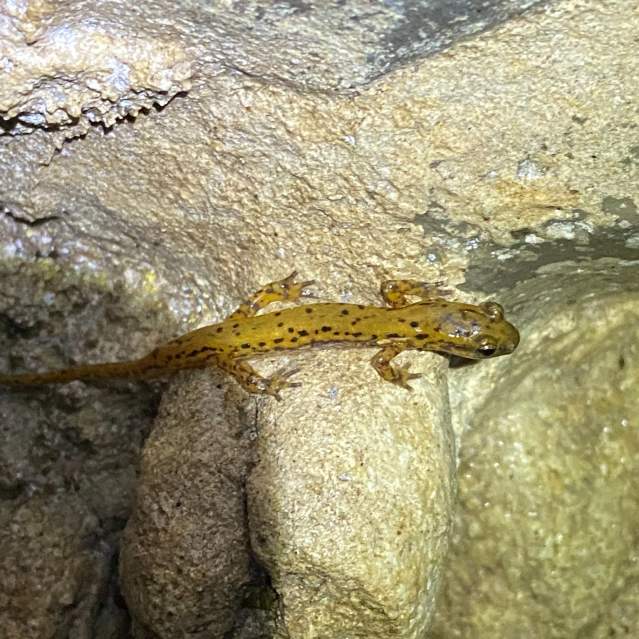East Tennessee could be called the Salamander Capital of the World! Our region is home to more salamander species than anywhere else. Over 70 species of salamander—14% of species on Earth— are native to Tennessee, with most of those living here in the eastern region. According to the National Park Service, salamanders outnumber all other vertebrates in the Great Smoky Mountains on an average day, including human visitors!
Salamanders are a fascinating group of creatures with a wide range of habitats and behaviors. Some live in water and some on land, some have gills while others have lungs, some have legs and others have no legs at all. Many are small, but there are large species like the eastern hellbender. One thing they all share in common is that they are amphibians and require a moist place to live.
In winter, salamanders lay eggs and fertilize them in the water, then the hatching season takes place in mid to late spring. There is a very wide variation in the life cycles of salamander species. For example, the common mudpuppy spends its entire life in the water, but the eastern tiger salamander leaves the water after hatching and lives on land. Some have gills and some do not, while others lose their gills as they mature and grow lungs.
With so much variation between species, you will find salamanders in a multitude of places! They are often found in streams, up trees, and under rocks or logs. Salamanders are mostly nocturnal, so if you are looking for them during the day, check their napping spots. Under logs and rocks in the forest is a great place to start, but make sure to gently return everything the way you found it.
Salamanders have sensitive skin that stays moist, so please do not handle them. If you find a new friend, you may look but don’t touch!
Here are some local spots to start your salamander scavenger hunt:
Collier Preserve
Search along the banks of Beaver Creek in this quiet nature preserve in Powell. If you walk past the bridge, a half-mile loop trail explores a forested wetland with lots of logs to overturn and a natural spring, great habitat for a northern slimy salamander or southern two-lined salamander.
Ijams Nature Center
You may spot the eastern newt or spotted salamander in the forests at Ijams! Under your feet, there are cave salamanders found in the limestone caverns running underneath the Ijams grounds. You will find a gated opening of one cave in Hayworth Hollow off the Imerys trail. While there is no public access, if you shine a light beyond this gate, you’ll see (and feel) the muddy, cool environment these salamanders call home.





